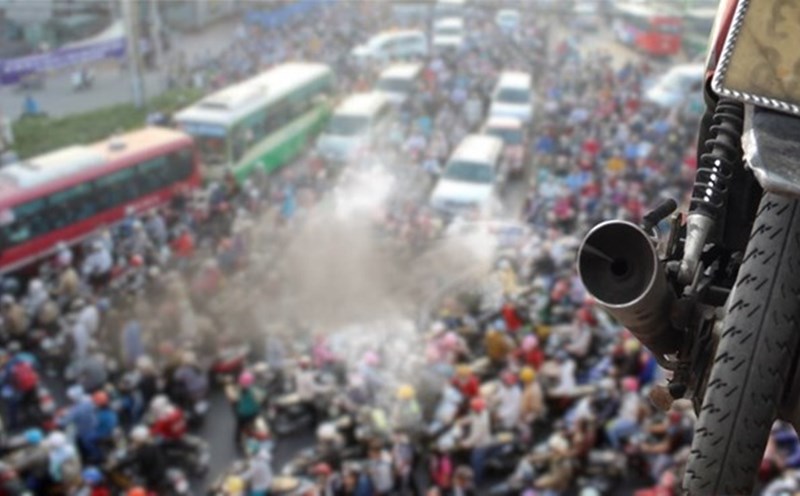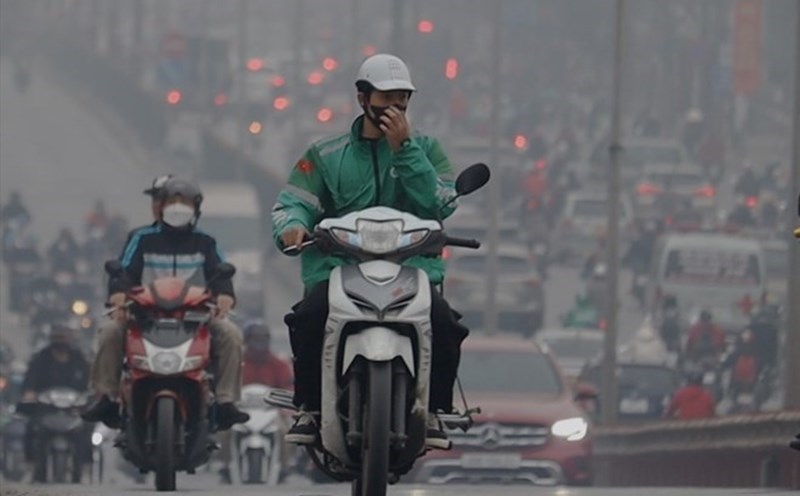Many old vehicles that do not meet emission standards are still in circulation
Air pollution is an existing problem in Vietnam, focusing on two key economic regions. North (Hanoi City and neighboring provinces) and South (Ho Chi Minh City and neighboring provinces).
According to the Department of Environment (Ministry of Agriculture and Environment), the main causes of dust and emissions that pollute the air environment include transportation sources such as road dust; Emissions from motor vehicles using fossil fuels; Many old vehicles that do not meet emission standards and are still circulating in the city.
Sources of pollution are from construction such as the construction of houses, traffic works, public works such as renovating road surfaces and sidewalks. The lack of technical management measures such as covering, washing vehicles, public hygiene... causes dust in many stages...
According to Mr. Le Hoai Nam (Deputy Director of the Department of Environment, Ministry of Agriculture and Environment), through data, the main causes of air pollution in Vietnam in general and Hanoi in particular are emissions from transportation activities.
Applying a stronger emission inspection roadmap in localities under pressure from pollution
According to Mr. Le Hoai Nam, based on determining the causes of air pollution, the Department of Environment is advising the Ministry of Agriculture and Environment on drafting National Technical Regulations on emissions for cars in circulation in Vietnam, and it is expected that this regulation will be issued in the second quarter of 2025.
Along with that, the Department of Environment is also coordinating to develop a Draft Roadmap for applying emission standards to cars in circulation. According to regulations, this roadmap will be submitted to the Prime Minister for consideration and promulgation. The roadmap will specify the level of application, implementation time and scope of application in each locality. The roadmap is oriented according to the principle: prioritizing earlier and stronger implementation in localities under severe air pollution pressure.
Besides, the control of emissions from motorcycles and motorcycles is also one of the big priorities. After the National Assembly passed the Law on Road Traffic Safety, including regulations related to emissions control for motorcycles, motorbikes, the Ministry of Agriculture and the Environment urgently directed the Department of Environment to develop the national technical regulation on emissions for these vehicles. Currently, the draft regulation has been sent for opinions of ministries, branches and localities. It is expected that the Regulation will be submitted to the Ministry for consideration and issuance in the second quarter of 2025.
Applying motorbike emission standards will have a big impact on people
According to the Deputy Director of the Department of Environment, in Vietnam, the rate of people using personal vehicles, especially motorbikes, mopeds and cars, is still very high. Therefore, to contribute to controlling and reducing emissions from this sector, changing the habit of using personal vehicles is extremely necessary. Specifically, each citizen needs to proactively conduct periodic inspections and maintenance of their vehicles to ensure that the vehicles operate effectively, while meeting emission standards issued by state management agencies.
Previously, emission control was applied to cars. In the coming time, the Ministry of Agriculture and Environment will issue National Technical Regulations on emissions for motorbikes and mopeds. This is a policy that has a profound impact on the people.
To effectively control emissions from large volumes of vehicles, the proactive participation of people is a key factor. Compliance with regulations on periodic emission inspection, ensuring vehicles meet environmental requirements is the responsibility not only of management agencies but also of each individual. In case the vehicle does not meet emission standards, people need to proactively repair, maintain or replace related parts to ensure compliance with current technical standards.











